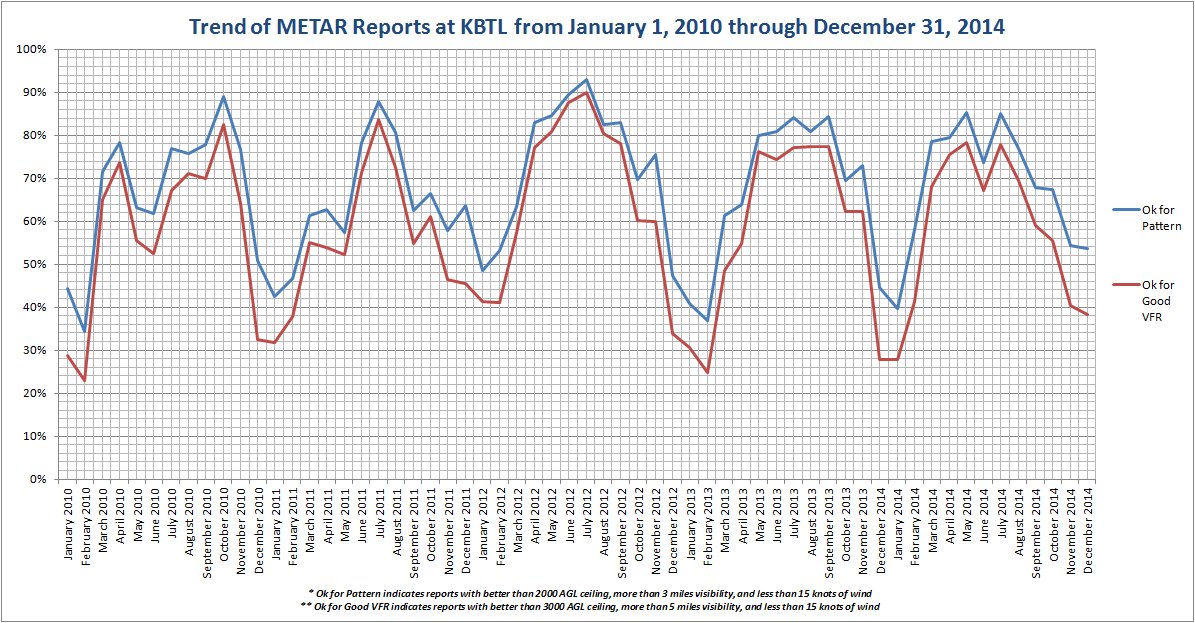Flying in the summer months at Battle Creek, Michigan is, on average, almost 40% more likely to result in experiencing weather conditions that allow flight training to be successfully completed.
Flying when the weather is better allows more flight training to be completed. This is a simple statement, but many don’t really look into the details of what it means. While I spent some time working on an article comparing weather at sites across the country in relation to flyable weather conditions for flight training, I drilled down the numbers in much greater detail for Battle Creek because it is home, it is information that directly affects students and instructors I personally know, and the data that I found was strongly trended.


